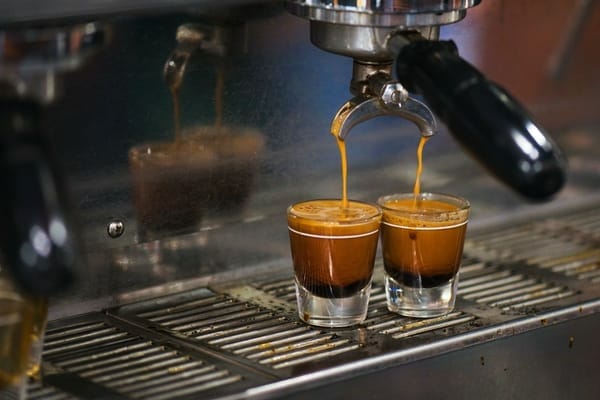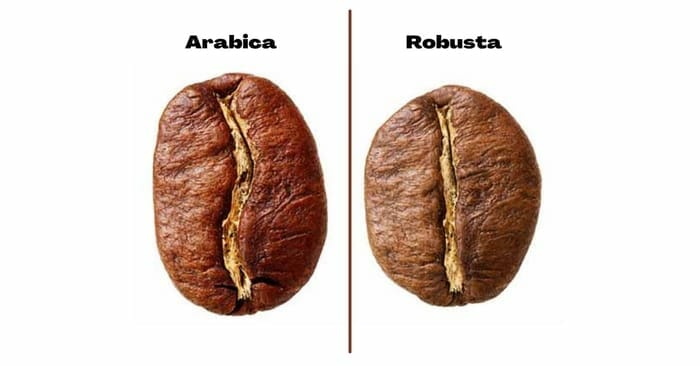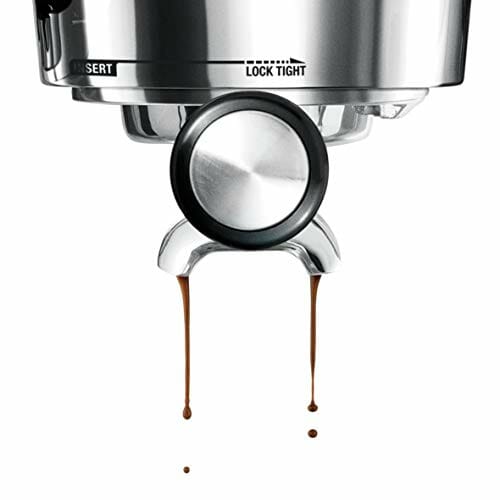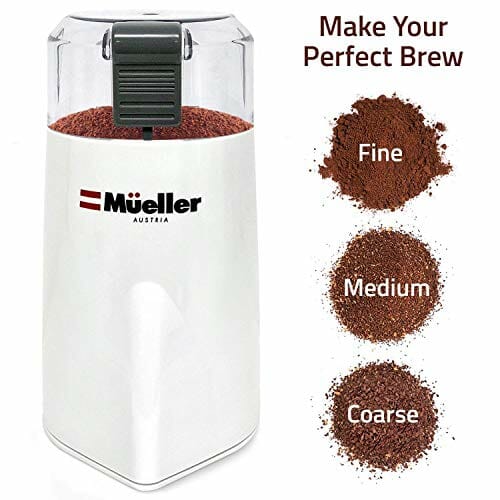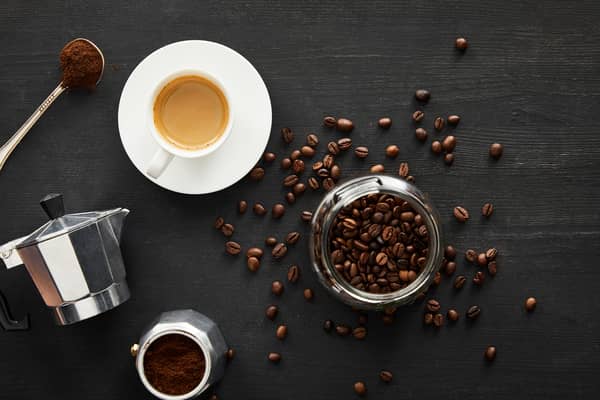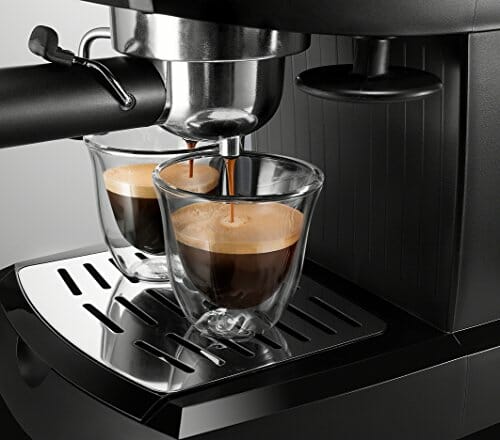Do you need an extra kick of caffeine more than your regular cup of joe can provide? An espresso shot could be just the answer you’re looking for. If you’re a coffee-lover, you know the distinctions between an espresso and regular coffee.
But is espresso stronger than coffee? The short answer against popular belief, it’s actually coffee BUT you should find out why here.
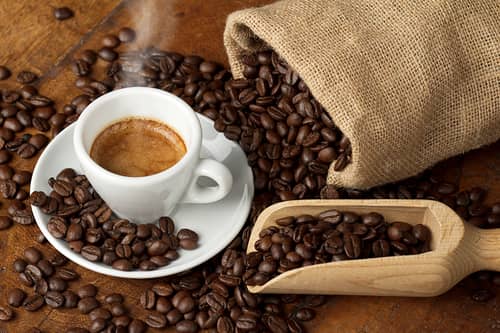
What is espresso coffee?
Knowing what espresso coffee is will help us sort out any misunderstandings. First, espresso is not a specific coffee variety.
In reality, many top-quality coffee shops utilize the same beans to make their drip coffee and their espresso. The only different thing is the amount of grind and the equipment used.
Espresso is an extraction method, simply put, like drip coffee, French pressing, and cold making. But imagine other things we love in different ways.
For instance, take an eggplant as an instance. It is possible to roast it or fry it or even stew it. But, there are many opinions about which is best.
Moreover, the coffee maker plays a vital role. It operates by putting a set amount of espresso beans in the strainer, then making sure that the machine is filled with water and turning it on.
The machine then heats the water and pours it over the coffee beans. Within a couple of minutes, freshly brewed, hot, bitter coffee would be ready.
What is the process of making espresso coffee?
The simple brewing method is the way that most of the coffee is made. When making regular drip coffee and espresso, the distinction is how heated water gets added to grind coffee beans.
Espresso is made when the machine presses water into the ground coffee beans using the pressurized method. This produces small portions of coffee that are particularly strong or espresso.
Typically, you utilize between eight and twelve ounces of water per average cup when you make coffee.
Espresso that is served in small portions, you will only need one shot glass of water. The result is a significantly more concentrated coffee cup.
How do you define drip coffee?
Drip coffee is a type of water that is passed through coffee. Filters can allow delicious and healthy ingredients to filter through.
The coffee grounds taste delicious. To make an ideal fresh cup of coffee, we have to be attentive to three things.
Coffee experts refer to it as the three Three Ts: temperature turbulence as well as timings. Although this might seem complicated, we’ve used it to make coffee at home.
What makes an Espresso stronger?
Because espresso is highly concentrated, it can appear to be more potent than regular coffee.
Espresso may be a little more bitter for your taste buds; hence many prefer to add steamed milk or sugar for a sweet taste.
However, the coffee’s real strength isn’t attributable to the way it is made but instead to the roasting process.
Before coffee beans can reach your kitchen, the beans are first prepared by a roasting company that typically produces the coffee’s brand name.
To get light roasting, the coffee beans are typically roasted at about 196-205 degrees Celsius.
Coffee beans of medium roast are cooked between temperatures ranging from 210-219 degrees Celsius.
Dark roast coffee beans are cooked between the temperature of 225-230 degrees Celsius.
Most folks believe that the caffeine content of coffee rises when it is roasted for a more extended period.
This is why darker roast beans can contain the highest amount of caffeine. This, however, is not true.
In reality, the longer coffee beans are roasted lesser the caffeine concentration they have. Caffeine is dissipated during the roasting process.
Type of Beans
There are two primary varieties of coffee beans: Robusta and Arabica beans.
Beans are the element that determines bitterness, flavor, and caffeine levels. Roasting can only enhance the flavor.
Arabica
It is believed that the Arabica coffee beans mainly grow at higher altitudes. Therefore, it is more difficult to cultivate and collect, making these beans more expensive.
However, it’s also the most sought-after bean due to its more sweet taste and softer texture.
Additionally, the beans are often flavored with fruits or berries, which gives the coffee lover a more “exotic” flavor.
If you look at the bean, you’ll notice it is larger than the stout and short Robusta.
Robusta
Robusta is a popular variety from Coffea Canephora. It has a stronger bitter flavor and grainy or rubbery notes, so it’s perceived as less refined than Arabica in flavor.
Robusta is widely incorporated in espresso blends because it provides a superior crema despite its lack of sophistication.
Moreover, it is less difficult to grow since it is highly resistant to insects and diseases. Additionally, Robusta beans are also more caffeine-rich per gram.
What causes the differences in the levels of caffeine in espresso as well as drip coffee?
There are a variety of variables that impact how you can create strong coffee. This includes temperature, saturation, time grinding, and time.
Temperature
The hot water used for making espresso and coffee is used as a solvent to remove caffeine and natural flavors of the beans from the grounds. A proper temperature for water is vital to make espresso or coffee.
The optimal temperature is near the boiling point but not boiling, between 200-220 degrees Fahrenheit.
It is also vital to how flavor and caffeine can be removed from the ground coffee beans. For instance, cold brewing may take longer than regular roasting at higher temperatures.
Grind
The grind size significantly impacts the speed at which caffeine can be removed from the water.
Finer grinds are extracted more quickly since water can reach the surface and soak the grinds quickly because there is a larger contact surface area.
Finely ground beans take longer to extract and could cause under-extraction.
Insufficient extraction can happen when espresso or coffee is too coarsely ground.
Likewise, excessive extraction can happen when the espresso or coffee is too delicately ground.
A perfect balance has to be attained to create the perfect cup of coffee or espresso shot.
Saturation
Every coffee grind has to be saturated to get all the caffeine present in the grinds. In the event that all grinds have been saturated, the caffeine can be extracted now.
Time
The cold brew is not the only option, but most coffee-making methods extract all caffeine from grounds within the first second of the extraction.
As a result, the perfect espresso shots typically take 20-30 seconds to make, whereas drinking a standard cup of tea can take about 1 minute.
Is espresso stronger than coffee?
Many people believe that espresso is more caffeine-rich as compared to regular coffee. It could be the case if you’re looking at two drops for a drop.
However, If you’re looking at the size of the serving, then you could be surprised to find out that coffee does win with 128 milligrams of caffeine in a cup, as opposed to the 90 to 100 milligrams of caffeine you get from an espresso shot.
If you’re taking drop-for-drop measurements, then it’s evident that espresso wins; however, there aren’t many people who drink eight-ounce espresso cups in one sitting.
Espresso is more caffeine-rich per one ounce than regular coffee, but it has lower caffeine levels per serving.
FAQs
Which is stronger black coffee or espresso?
In terms of technicality, espresso is more concentrated in terms of coffee per ounce; however, drip coffee is more caffeine per cup. So if you compare it per ounce, instead of by serving size, coffee is known to have an incredibly higher quantity of caffeine.
Why is espresso available in small quantities?
Espresso is served in 1 or 2-ounce portions because it is unhealthy to consume 8 or 12 ounces of it in one sitting. The reason espresso is delivered in smaller cups is to keep crema. A well-crafted crema can keep the aromas of espresso and enhance the flavor.
Does espresso have more caffeine than coffee?
If you compare one espresso shot with the entire cup of coffee, you’ll notice that the coffee cup has more caffeine.
However, most people don’t drink espresso out of mugs, and you definitely shouldn’t consume coffee in the espresso cup.
A typical cup of drip coffee can hold between 8 to 24 ounces, while one espresso shot usually contains about 1 ounce.
What is the difference between espresso and regular coffee?
The grind quality and the amount of time it takes to make the coffee distinguish espressos from regular coffee. Espresso is made up of ground beans typically made directly in the espresso machine. This means that the coffee has more consistency and it can be made more quickly than regular coffee.
How much caffeine is in a cup of coffee?
An 8-ounce cup of coffee contains around 95 milligrams of caffeine. Depending on the coffee blend, the caffeine content of espresso can range between 60-100 milligrams.
Conclusion
Espresso is stronger than coffee; it has a more intense flavor because it is highly concentrated
If this is your first attempt at an espresso, don’t fret that the bitterness of coffee makes you turn off a little.
It is an acquired taste with time; you’ll be able to enjoy the drink and even to the point that you cannot imagine how you’ll get through an entire day without it.
Read why you see sparkling water served with espresso here.

![Is Espresso Stronger Than Coffee? [Answered & More] 2 Is espresso stronger than coffee?](https://coffeegeek.tv/wp-content/uploads/2021/12/Is-espresso-stronger-than-coffee-1024x536.jpg)
